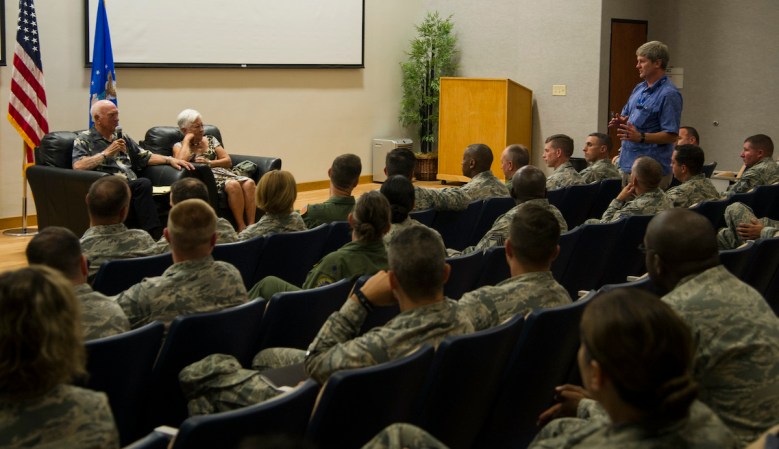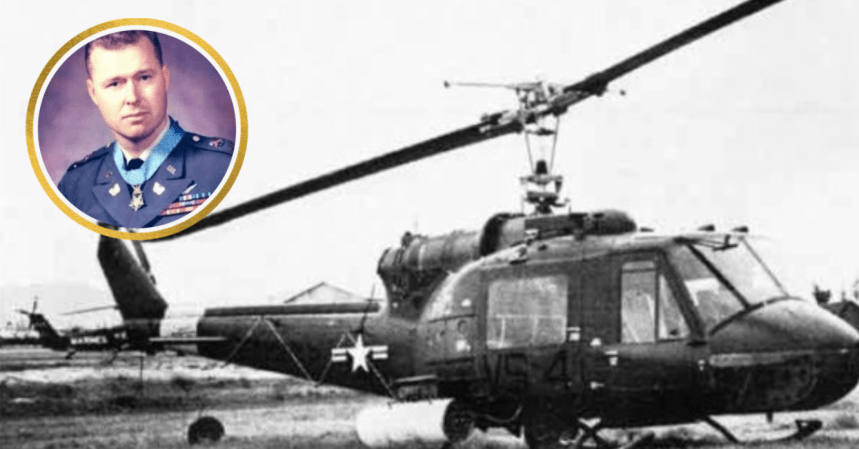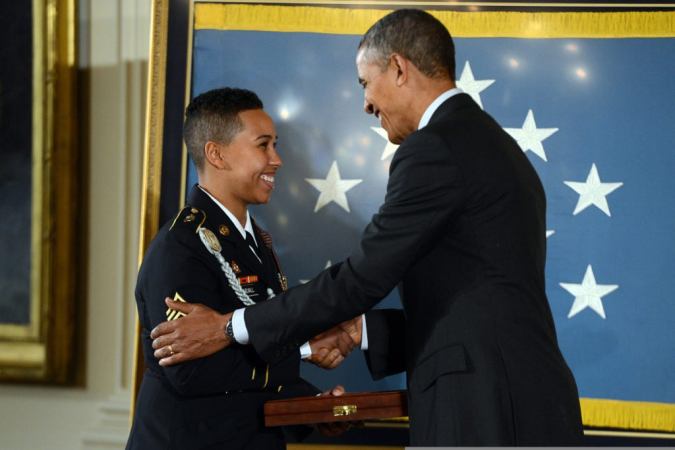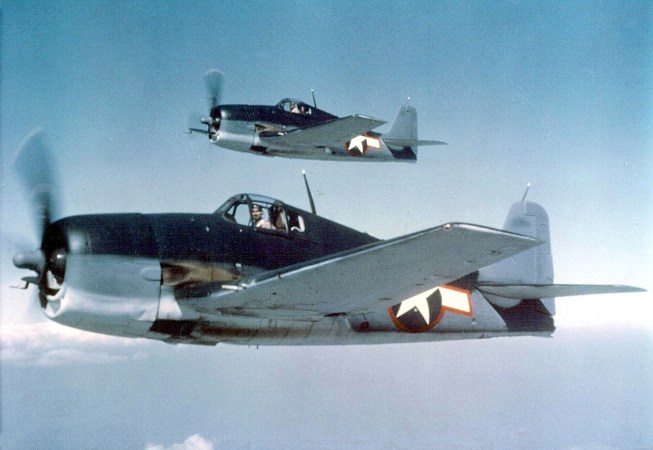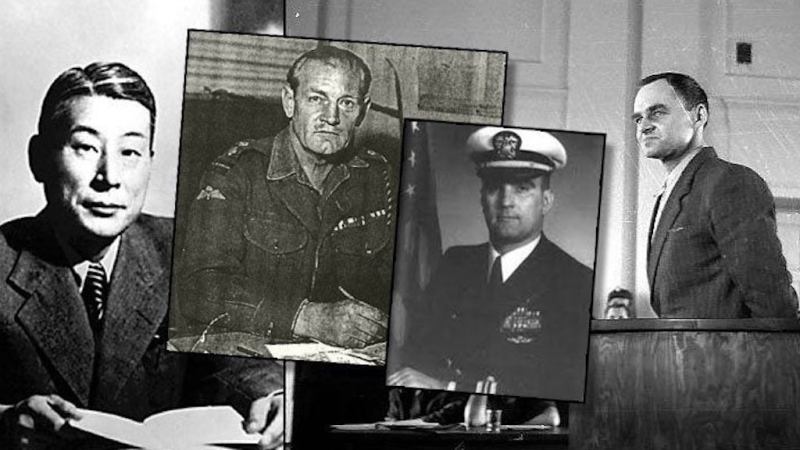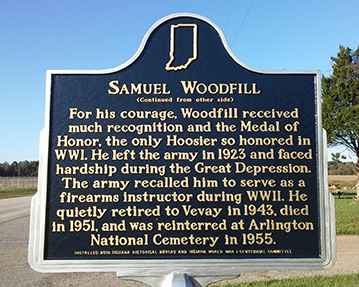There was no shortage of heroes in the Vietnam War. Whether fighting in the pitched battles of the Ia Drang, in Hue City, or in the skies above, American troops served with valor.
Here are four lesser known heroes of that conflict:
1. Drew Dix — U.S. Army

Maj. Drew Dix holds a unique place in military history. He was the last of four men from the city of Pueblo, Colorado, to receive the Medal of Honor and he was also the first Special Forces soldier to receive the Medal of Honor.
If there is indeed “something in the water,” as President Eisenhower said, then Dix must have had more than his fair share. Dix first enlisted in the U.S. Army hoping to join Special Forces but had spent three years in the 82nd Airborne Division before being accepted.
By 1968, Dix was a Staff Sergeant serving as a Special Forces advisor in Vietnam. On January 31, 1968, the first day of the Tet Offensive, Dix was stationed near Chau Phu when the city was attacked by two heavily armed Viet Cong battalions.
Supervising Vietnamese soldiers, Dix led his small group on an attack into the city. Receiving information that civilians were trapped, Dix systematically, and sometimes single-handedly, attacked multiple buildings, killing or driving out enemy forces and rescuing some fourteen civilians from the battlefield.
Over two days of fighting, Dix, while leading his small group, was also credited with fourteen enemy killed and possibly as many as 25 more while capturing a further twenty enemy.
2. George “Bud” Day — U.S. Air Force

Col. George Day’s story starts the day his F-100 was shot out of the sky over Vietnam on August 26, 1967.
Then-Major Day was leading a Misty Forward Air Control flight when his plane was crippled by anti-aircraft fire. He ejected but was badly injured in the process. Not long after reaching the ground, he was captured and taken to a small POW camp.
According to his Medal of Honor citation, he tricked the guards and made a break for it into the jungle.
Despite his injuries, and incurring more, Day traveled south towards the DMZ. He survived on berries and raw frogs. He made it very close to American lines but was unable to signal several American planes overhead.
Suffering from delirium, he began wondering aimlessly until he was recaptured by the Viet Cong who shot him in the hand and leg in the process.
Once in captivity, Day offered nothing but maximum resistance to the enemy and kept the faith with his fellow POWs. Along with receiving the Medal of Honor for his bravery in escape and resistance also received the Air Force Cross for his staunch refusal to cooperate.
To date he is the only man to receive both awards.
3. Jay Vargas — U.S. Marine Corps

Col. Jay Vargas was a Captain leading Company G, 2nd Battalion, Fourth Marines, when he assaulted the village of Dai Do on May 1, 1968.
The previous day he had already received painful wounds but had refused to be evacuated. Despite his wounds and a large volume of enemy fire, Vargas successfully maneuvered his company and two others through open ground to gain a foothold in the village.
When his men became pinned down, Vargas personally led the relief effort and then led the attack into the village. Wounded for a second time, Vargas again refused to be evacuated and continued the fight to ensure that the objective was secure.
No sooner had Vargas secured the perimeter than enemy counterattacks and probes began, but the Marines held through the night.
After receiving reinforcements, the Marines again went on the offensive. When a massive enemy counterattack threatened to drive back their position, Vargas remained in the open, offering aid and encouragement to the beleaguered Marines.
He was then hit for a third time in as many days. Ignoring his wounds once again, Vargas continued to lead his Marines until he saw his battalion commander go down.
Charging through a hail of gunfire, Vargas successfully evacuated his commander to safety before rejoining his Marines and reorganizing their defense.
For his actions over those three days, Vargas received the Medal of Honor.
4. Thomas Norris – U.S. Navy
Lt. Thomas R. Norris and Petty Officer 3rd Class Nguyen Van Kiet. Norris was awarded the Medal of Honor and Kiet was recognized with the Silver Star.
On April 2, 1972, an EB-66 carrying Lt. Col. Iceal Hambleton was shot down near the DMZ and right in the middle of the North’s Easter Offensive. Hambleton’s extensive knowledge of critical information made him a high priority for rescue.
However, efforts by air led to the loss of additional aircraft and more airmen killed. Finally, an attempt by ground was ordered.
The man in charge of the mission was U.S. Navy Seal Lt. Thomas Norris. He initially led a five-man team into hostile territory and was able to recover another downed flyer, Lt. Mark Clark – son of WWII General Mark Clark, who had been shot down searching for Hambleton.
Norris then led another mission but was unsuccessful in locating Hambleton. With time running out Norris devised a daring mission.
Norris, accompanied only by a South Vietnamese Commando, Nguyen Van Kiet, disguised themselves as fishermen and traveled deep into enemy territory. Patrolling through enemy infested jungles, Norris was able to locate Hambleton.
He loaded Hambleton into their sampan and covered him with bamboo and successfully navigated their way back to American lines while evading North Vietnamese patrols.
Just as they were reaching their base, they came under intense enemy fire, which Norris neutralized with a well-placed air strike.
For his highly successful, highly classified mission Norris was awarded the Medal of Honor. Nguyen Van Kiet became one of the few Vietnamese to receive the Navy Cross.



